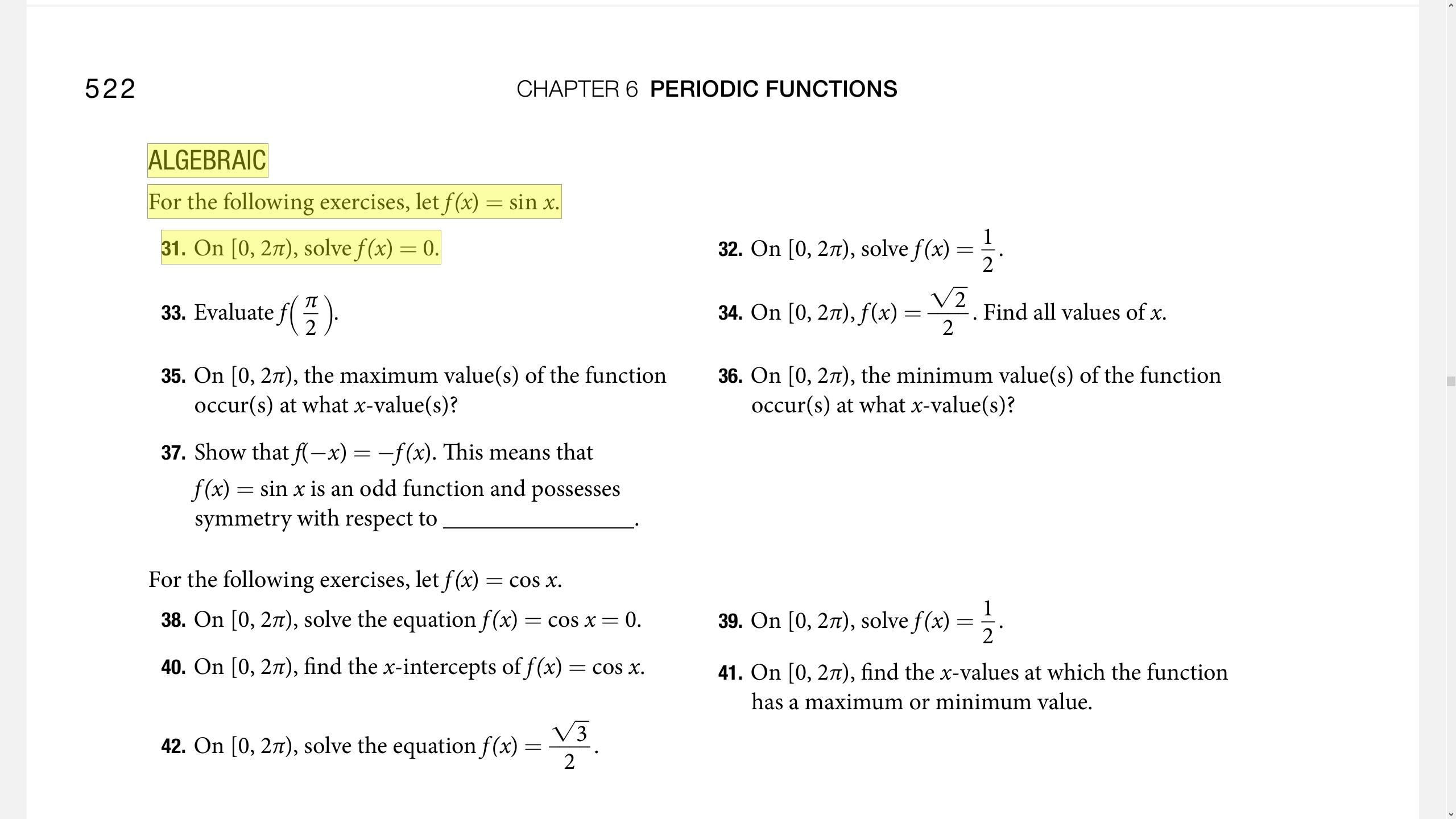I've been knocking out the trig problems in this section with minimal difficulty so far, but I've run straight into a brick wall on this "Algebraic" part. I'm asked to find sin(x)=0 between [0,2π). If I graphed the unit circle this would be a trivial exercise to show sin(θ)=0 when θ=0 or π.
Where I have trouble is- I'm very explicitly being told here that the solution is ALGEBRAIC, and I'm struggling to figure out a way to rearrange sin(x)=0 to come up with the known answer. Further, unit circles are not in this chapter, they wouldn't likely ask me to exercise a skill taught in another chapter. What am I missing?
It's not just 31, either. Looking ahead at eg 37, I can easily show sin(-x) = -sin(x) on a unit circle. I could maybe fuck around with inverse trig ratios but those are in section 3- this is only section 1.
Help me out here, drop a hint, share a link: how do I solve sin(x)=0 on [0,2π), but algebraically? I suspect it's something glaringly obvious and/or very very simple I've overlooked.

For unit circle:
x^2 + y^2 = 1
in general
cos A = x/ r
sin A = y / r
Here:
cos A = x and sin A = y
From first equation
x^2 + sin^2 A = 1
Or
sin A = sqrt ( 1- x^2)
sin A = 0 for n PI for all integers n
Rewriting the problem as solving sin(A)=0 and then claiming outright that A must be an integer multiple of pi doesn't really help as far as I can tell, since that is just the original problem with x exchanged for A?
It does if you claim to know cos (A) = 1. Like I said, fast and loose. The question as given is illposed. You have to know something. If not, why not ask a philispohical question like what is trigonometry even?
My issues with this are: Your solution did not originally claim this, it is not stated anywhere in the problem and it leads to exactly the same kind of foundational issues in the context of showing "algebraically" why cos(x)=1 at integer multiples of 2pi now.
Agreed. It's at least vague/misleading. This is apparently for a precalc clep exam, so the only real sane definition a student would know to fall back on here would be geometric definitions for sine and cosine. What I think the intent of the problem is, is to build intuition on knee jerk facts about sine/cosine rather than something particularly formal?
I see how this would prove x = 1 when sin A = sqrt (1 - x^2) = 0 , but I don't see how to find the relevant angle from this. How did you go from sin A = sqrt (1 - x^2) to sin A = 0 when A = nπ where n is any integer?
I'm playing a bit loose and fast, but think about it like this. Imagine you have a triangle in the 1st quandrant with unit hypotenuse. The triangle collapses to the x axis, giving x = 1 and theta = 0. The consequencea for sin 0 can be determined from this
Gotcha, thanks.